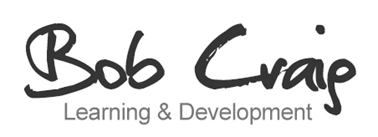Bridges and Walls
With DJ Trump back in the White House and his uncompromising, transactional negotiation style in full swing, I got to thinking about the metaphor of bridges and walls in relation to student learning and human relations.
Narratives based on binary opposition - this is right, that’s wrong; it’s this way, or no way, we’re the good guys, they’re the baddies - are sometimes appropriate and can be associated with being assertive, focused and determined. Students, staff and leaders can achieve success when we stick to the plan and are unwilling to be distracted, derailed or discombobulated (love that word!). However, in most learning, workplace and leadership contexts it’s prudent to listen, be adaptable, compromise and be prepared to alter your course when the evidence changes. Building bridges in learning contexts, implies movement, progress and connectivity.
Idea for teaching, pastoral or organisational contexts
It could be fruitful to explore the metaphors of bridges and walls. We could share examples of our ‘red-lines’, convictions and carefully considered walls. For students, these could be deliberate behaviours related to study routines, habits and choices, such as never studying and ‘watching’ a TV programme at the same time or always being detailed and specific when writing instructions for AI software. We could also students to identify walls which they’d rather not have and which hinder their learning or affect their wellbeing. These walls could be things like mindset barriers, self-belief issues, fear, procrastination, skills gaps (real or perceived), access to information and other factors.
With these unhelpful walls, we could continue the metaphor and ask how they navigate around the wall, get over the wall, avoid the wall, chip away at or demolish the wall completely.
The bridges might relate to learning how to become more self-aware, being kind to ourselves, learning how to frame powerful questions, think critically and creatively, know how to ask for help, learn from others and a whole range of other things.
Examples of workplace walls:
♦ Unresolved differences, or misunderstandings between individuals or groups
♦ Personal grudges, personality clashes, differences of values or work ethics
♦ Autocratic, passive-aggressive, passive or aggressive interaction styles
♦ Lack of empathy and emotional intelligence (self or others)
♦ Not feeling valued, being disrespected or losing one’s sense of purpose
♦ Unclear, vague, overly complex, missed messages or the absence of communication
♦ Lack of consultation on policies, projects or key strategic decisions
♦ Unclear vision, mission or goals
♦ Lack of skill or will to do the job (in self or others)
♦ Fixed mindset and limiting beliefs (e.g. “Stick to what I know, because it always goes wrong when I try something different”)
♦ Anxiety and fear (of success, of failure, of making mistakes, disapproval, embarrassment, being reprimanded, not being able to cope if things don’t go to plan, not being good enough, being exposed as an ‘imposter’, a charlatan, a fake, a loser, a bullsh***er)
♦ Procrastination (i.e. getting started)
♦ Boredom, lack of variety, stagnation, ‘dopamine-deficient’ environments
♦ Actual walls and poor layout of workspaces
♦ Silo working, no opportunity for sharing of ideas, experiences, challenges, achievements or resources
♦ Underdeveloped or inflexible communication skills (e.g. in resolving conflicts, being assertive, moderating own moods, inspiring others, promoting thinking, problem solving, demonstrating curiosity)
♦ Interpersonal communication based on interrupting, telling and imposing rather than employing coaching and mentoring skills and approaches
As individuals or a team, you could facilitate bridges and walls conversations yourself or you could contact
info@bobcraig.co.uk to discuss this issue further. If a wall-themed CPD day for staff or a session with students holds little appeal, I’ll get over it! If any or many of the
above issues resonate with you, please contact Bob for a no obligation conversation.



